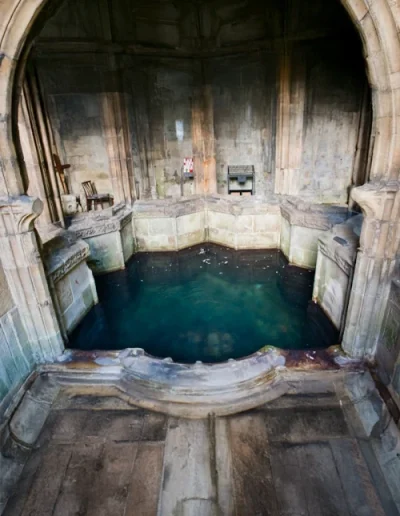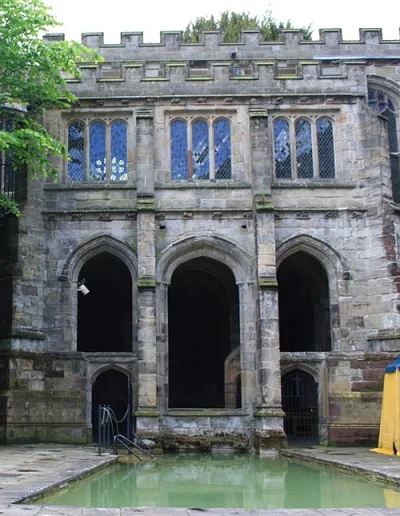
Part 3: Norway’s Sacred Waters: A Journey Through Myth, Ritual, and Flow
The Call of Norway’s Ancient Waters
– Composed by Douglas Webber, and edited by Ekan Nangaku Leisching
At the break of dawn, I drift upon the breeze, a peculiar mist, drawn eastward by the calls of Norway, absorbing the secrets of its ancient waters. The salt spray, a taste of the ocean, carries whispers of ancient powers. I feel them now, the currents that pull me eastward, towards the towering peaks and deep-cut fjords of Norway.
They speak of Ægir, the master of the ocean’s depths, and Rán, his consort, who gathers the lost with her shimmering net. Even the gods, I sense, are reflections of my own essence. They are the waves, the storms, the calm, the unfathomable depths.
The Daughters of the Sea

And I feel the presence of their daughters, the spirits of the waves themselves: Himinglæva, whose surface gleams like the sunlit sky; Dúfa, who dips and dives beneath the surface; Blóðughadda, whose crest is stained with the crimson of a dying sun; Hefring, who rises powerfully from the depths; Uðr, who froths and foams with untamed energy; Hrönn, who rolls and swells in a relentless rhythm; Bylgja, who crashes against the shore with fierce intensity; Dröfn, whose white foam trails behind her like a shroud; and Kólga, whose chilling touch brings the bite of winter to the waves. Each a facet of the sea, each a part of me.
The Waters That Feed Yggdrasil
And from their watery realm, a greater power arises. The waters nourish Yggdrasil, the World Tree, roots delving deep into the earth, drawing sustenance from the Well of Urd, that primordial spring where fate itself is woven. I feel the pull of its mighty roots, the ancient connection between the sky, the earth, and the waters that bind them.
A tremor runs through the earth, a subtle vibration that speaks of immense power, a primal hunger. Nidhogg.. The serpent, gnawing at the roots of existence.
I am drawn, inexorably, towards the source of that tremor, towards the roots themselves. This is no simple flow; it is a journey through a labyrinth of earth and stone, a descent towards the heart of the world. I must navigate the twisting channels, avoid the crushing pressure, the snapping jaws that consume all that falls within their reach. I am but a single drop, yet I carry the memory of the ocean, the strength of the tides, and the enduring resilience of life itself.
I slip past the primordial form, feeling the heat of its breath, the spray of its spittle, the rumble of its discontent. And then, I am through, drawn into the embrace of the roots of Yggdrasil, a network of life that spans worlds.

A Drop of Dew Returns to Earth
Absorbed into its wood, I am part of Yggdrasil itself, flowing through its veins, rising with the sap, carrying the wisdom of the Well of Urd to the highest branches. I witness the unfolding of seasons, the cycle of life and death, the turning of the Great Wheel, where life feeds on death and death gives birth to life..
And then, I am released, a single drop of dew on a leaf, catching the first light of dawn, before falling, once more, to the earth below and the embrace of Mjøsa, Norway’s largest lake.
The Ancient Echoes of Mjøsa
Mjøsa stretches out before me, another mirror reflecting the heavens. Born of glacial melt, cradled in a valley carved by ice and time, its depths hold secrets older than the sagas. Falling gently onto its surface, joining the timeless waters, ready to begin a new chapter of my unending journey.
I sense the echoes of ancient rituals: the rhythmic beat of a shaman’s drum, calling upon the spirits of the lake for guidance; the careful placement of stones along the shore, forming a sacred circle for ceremonies honouring the ancestors; the hushed chanting of blessings for a bountiful harvest, the lake’s bounty intertwined with the land’s.
I hear the voices of Sámi noaidi, seeking visions in the still, dark water, perhaps using the reflective surface as a scrying mirror to glimpse the future or communicate with other realms. The prayers of pilgrims echo, too: a plea for healing, a whispered vow of devotion, a song of gratitude for safe passage. All drawn to this place, a reflection of the World Tree. The memory of offerings shimmers – swords and silver gifted to its dark embrace.


Offerings to the Depths
I spread across Mjøsa’s surface, feeling its cold depths. The wind whispers across the water, carrying the scent of pine from the surrounding forests. I touch the smooth stones of the lakebed, remnants of offerings cast long ago.
A sword, its edge dulled by time, yet still holding the intent of the warrior who offered it. This was a gift to Njord, god of the sea and seafaring, of wealth and fertility – a blade given in thanks for safe passage home. The battle was over, the journey complete.
The Guardian of Mjøsa
And within that realm, within Mjøsa’s depths, legends speak of a guardian. A serpent, vast and ancient, its scales shimmering, a reminder of the wildness that lies beneath, the forces that shape this land.
From this inland sea, I join a river flowing west, a silver thread weaving through the heart of Norway.
The Majesty of Sognefjord

The journey is long, a descent through a land of rising mountains, capped with snow, and ancient forests. The air grows colder, carrying the scent of pine and salt.
Then, I see it. Sognefjord. The King of Fjords. A breathtaking chasm where mountains meet the sea, a mirror to the heavens and the soul of Norway. Fresh and salt water meet, echoes of glaciers linger in the depths. I spill into the fjord, a final release, a merging with the immensity. The journey from lake to ocean is complete.
The Sacred Waters of Selja
I am drawn to Selja, a small island, a speck of land in the fjord’s vastness. Here, the air hums with peace, sanctuary, ancient devotion.
I sense not just quiet encantations, but resonant chants of monks, heartfelt pleas of pilgrims, the presence of those who sought refuge here. I touch the stones of the ruined monastery, cool and smooth, worn by time and countless hands.
A Journey That Never Ends
And as I rise, drawn upwards by the setting sun, I carry these memories – a testament to water’s power to shape land and spirit.
From Viking longships to Sámi drums, from sacred springs to crashing waves, Norway’s story is inseparable from its waters. It is a story of reverence, respect, understanding that water is not a resource, but the essence of life, a connection to the past, a guide to the present, a promise for the future.
This story, my story, I carry. And I invite you too to explore it further. The Compassionate Water Module awaits. Delve into the Meditation practices. Listen to the ancient call of ‘Since the Beginning – Water Announces Life’. Consider the Apprentice Gatekeeper Training. Seek out Mentorship & Teachings.
For within the flow, the wisdom waits. The journey continues, and the waters will lead.
A Call to the Seekers
Throughout the world, people of the Way of Water—across continents, from east to west, north to south—priests, goddesses, shamans, and druids have given their human voices over to Water Speaking Water. In this eternal conversation, wisdom flows freely, carried by those who listen. Among them, Ekan Nangaku, an initiated Elder and Shaman in the ancient West African lineage of the Dagara (the Wild People), shares the teachings received through compassionate transmissions from Water itself. His mentorship and teachings illuminate the path for those called to the waters, those who seek to listen, to learn, and to carry forward the voice of the unseen.
The flow continues, and the invitation remains. Come, listen to the water’s voice, and let it guide you toward the next part of your path.
The waters are calling—will you answer?














